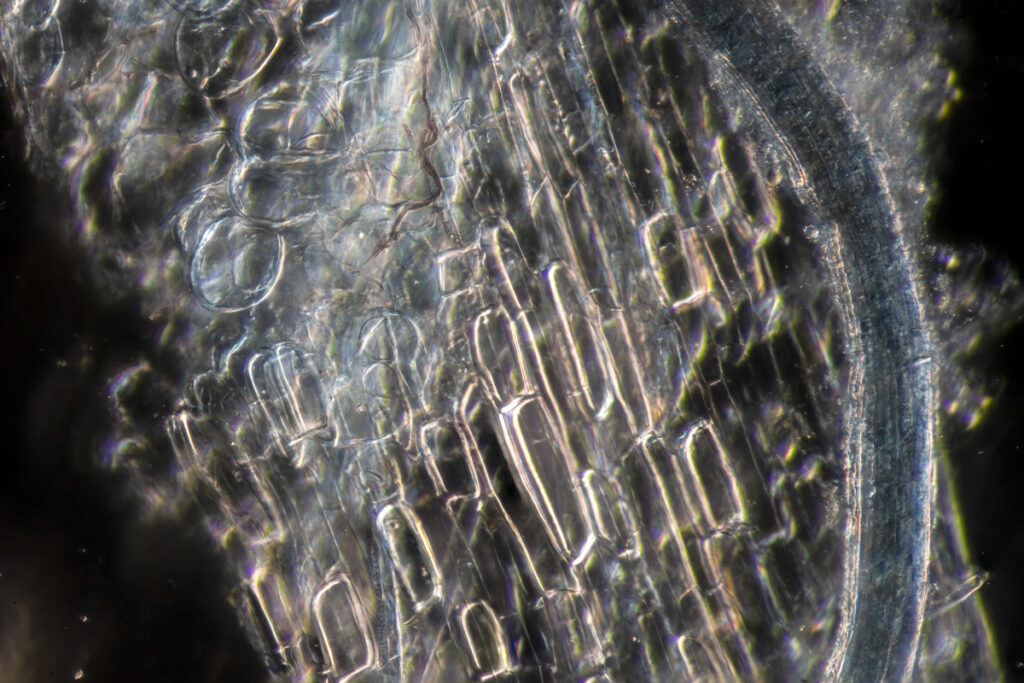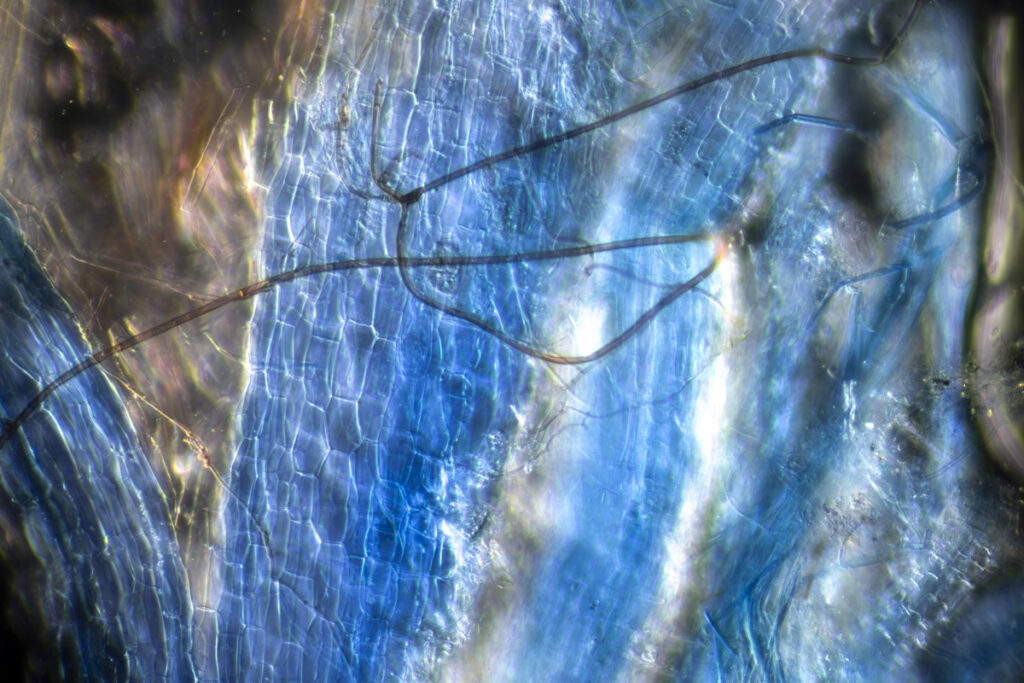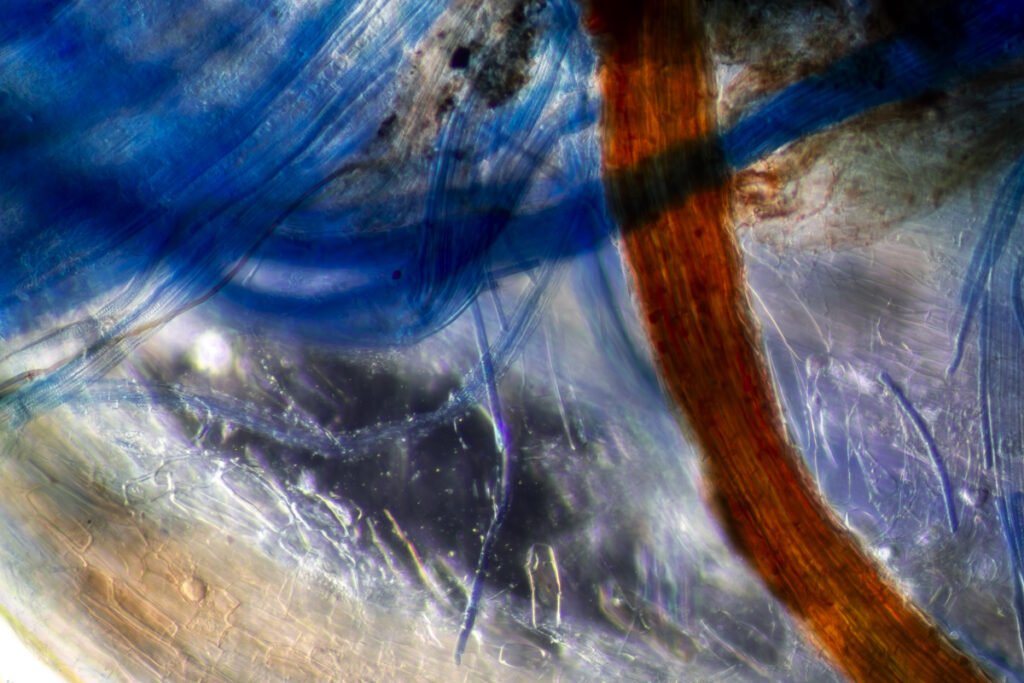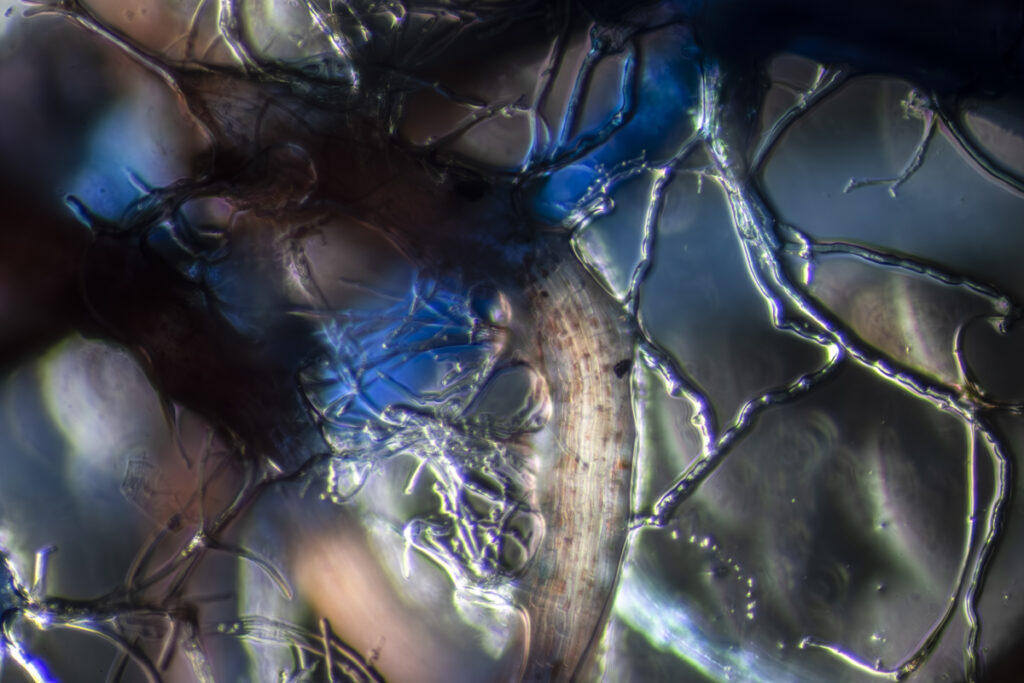
POSTINDUSTRIAL ECOLOGIES
Summerhall, Edinburgh
Edinburgh Science Festival 2024
Rhizosphere explores the way plants and fungi work together to undo the toxic residue of industrialisation. I have been exploring the dynamic exchanges between plants, fungi and microbes communicating just below the soil in postindustrial wastelands. The site, a former mine, is contaminated with lead, cadmium and many more heavy metals and chemicals. No longer safe to use for humans, it has had years of natural plant succession atop the piles of slag and concrete. Many of the plants that have self seeded on the wasteland are phytoremediating, and working to pull pollution from the soil while others are nitrogen fixing, pulling greenhouse gasses from the air. Through the entanglement of plants and fungi, the wasteland has become a vibrant ecosystem. I have been working in ASCUS Laboratory to explore the dynamic exchanges between plants, fungi and microbes communicating just below the soil.
I harvested roots found entangled in the postindustrial brownfield in Felling Gateshead at ASCUS lab in Edinburgh. I chemically stripped back all the internal cellular structures then stained the slippery white roots with trypan blue. The blue dye follows the path fungi, oomycetes and microorganisms make in and out of the cells of the roots. The umber threads I found darting and weaving between the root cells are Dark Septate Endophyte mycelium. The fungi shift between saprotrophic, parasitic, and symbiotic. They enter the roots, move between the cells and decide whether to share nutrients with the plant or take nutrients away and rot the plant. The latter may not be a good outcome for the individual plant, but the wider ecosystem will benefit from added nutrients. There is much still to learn about dark septate endophytes. I am enjoying fungi’s refusal to be contained by a binary of good and bad – everything is much more complex – interlinked, interdependent, dynamic.’


